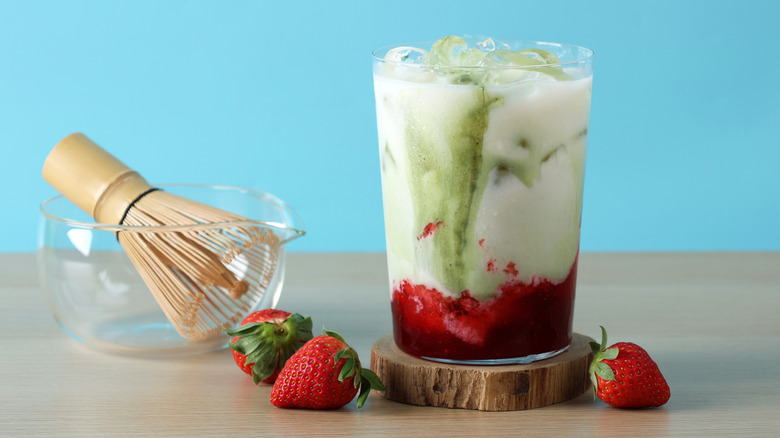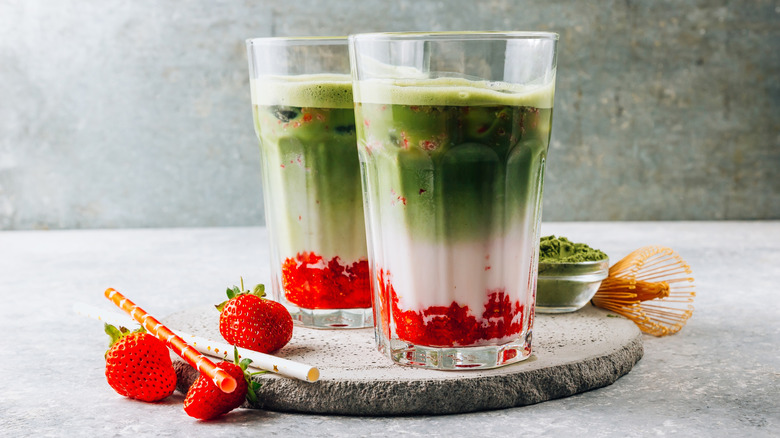How To Add A Little Strawberry Flavor To Your Matcha
Plain matcha has a distinct green, earthy taste, but adding some strawberry gives it a refresh, cutting through that earthiness with fruity sweetness. A common way you can do this is by using fresh strawberries, which will give you a bright taste and a pop of color – just muddle (smash) the strawberries with a little sugar, leaving tiny bits of fruit for texture. You can also slice them up, then macerate (soak) them with the sugar to allow them to soften. This will give the fruit a syrup-like consistency to use as the base of your matcha.
To completely avoid any little bits of berries, you can puree fresh or frozen strawberries so that they blend well into the drink. You can also purchase strawberry powder, which is usually made from freeze-dried strawberries and packaged without sugar. Whisk this powder directly into the matcha powder, or stir it into the milk like you would do with store-bought hot cocoa mix. You could also blend frozen strawberries with the matcha and milk for a thicker, smoothie-like drink.
Something that would take a little more time but can also serve as a nice alternative is steeping your sliced strawberries in hot water or milk. It's similar to how you would make a traditional hot tea, as it would draw out the essence of the strawberries. After your berries have been steeped, simply mix it into your matcha and milk blend for a delicate strawberry note.
Taking your strawberry matcha a step further
Once you figure out which strawberry method is best for you, you can start to play around with more different ways to craft your perfect drink. Instead of regular whole milk, you can use oat milk that is also creamy and can draw out the earthy sweetness of both the matcha and berries. Using almond milk would give a lighter body, similar to coconut milk, adding a slight tropical note.
To change up how you sweeten your strawberry matcha, consider the kind of sweetener used. While sugar is the usual suspect, you can change it up with a squeeze of honey to deepen the overall taste with a sweet, floral note. You can also create a warming sensation by using a good quality store-bought maple syrup, which has a cozy richness.
Try incorporating small amounts of additional ingredients to find different flavor profiles, like a couple drops of vanilla extract or even a touch of luxury with a little rose powder. If you don't want something too sweet, you can cut back the sweetener, and throw in some ground ginger to add a spiced flavor with a warm undertone. You could also try your hand at making a Taiwanese-inspired drink and add boba pearls for a milk tea or boba tea-style beverage. There are so many avenues you can take to perfect your strawberry matcha — and you can even give it a cocktail-inspired theme: Try coating the rim with an additional seasoning like crushed graham crackers and strawberry puree mixed with honey to make it stick better.

